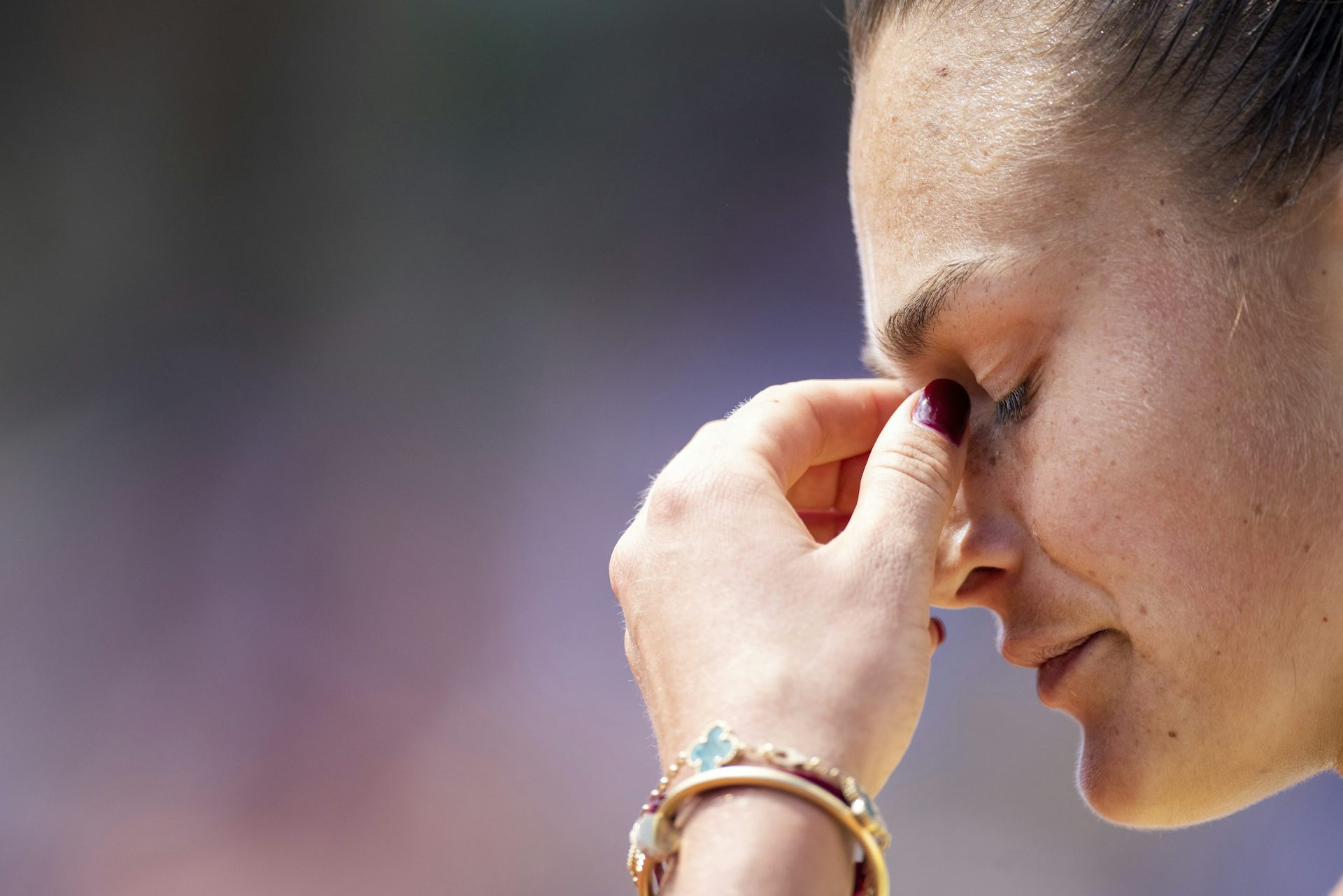How Ukraine is adapting the ancient practice of trophy displays for modern propaganda
Displays of captured Russian weaponry aim to show the strength of the foe Ukrainians face, but also that victory is possible.
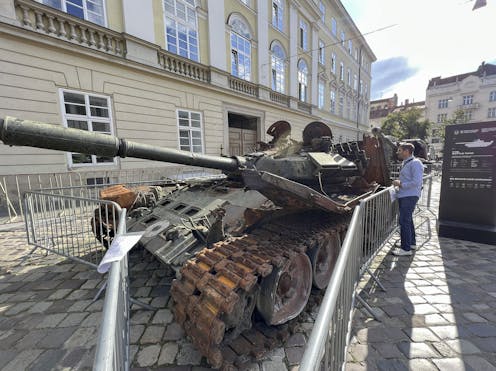
As Ukraine prepared to celebrate its independence day even while its military forces battled a monthslong Russian invasion, government officials assembled a grandiose, yet gruesome, display on Khreshchatyk, the main street of Ukraine’s capital city, Kyiv.
Wrecked and burned-out tanks, military trucks and other equipment lined the street as an intentional mockery of Russian President Vladimir Putin’s failed plan of a victorious Russian army parade in Kyiv.
This display, in August 2022, wasn’t a first for Ukraine, and it echoes an ancient tradition of displaying the looted weapons of a military adversary.
On the sites of battles they won, the ancient Greeks typically erected what they called tropaions – triumphal monuments made from trees and decorated with captured armor, weapons and helmets – to commemorate the victory and pay homage to a god. The classic Greek epic the “Iliad” contains references to Odysseus stripping the dead enemy of his armor for a subsequent ritual offering to Athena, the goddess of war and his divine patroness.
Ancient Romans continued the practice, and also developed a tradition of military triumphs, parades through the imperial city of Rome to show off the spoils of war, including slaves, art, bullion and weapons. Rich benefactors then often bought the loot and donated it to the Roman public for stationary displays that symbolized Roman imperial power.
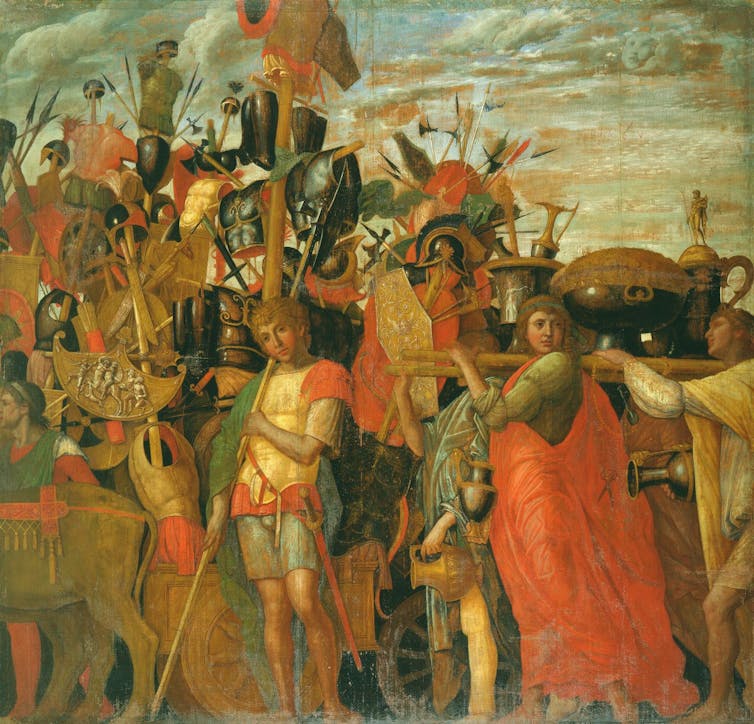
Trophy displays in the Modern Era
The practice continued into the modern Western world.
In the late 18th and early 19th centuries, when Napoleon led French forces to conquer and pillage other countries,including Italy, he brought back stolen art along with the enemy’s weapons. His triumphal processions in Paris deliberately evoked Roman tradition. The objects were then displayed in the Louvre.
The pillaging of cultural property became a feature of colonial violence, filling Western museums with looted art and valuables belonging to the colonized nations. The practice is currently prohibited by international humanitarian law, though that does not actually stop the pillaging.
Seizing the enemy’s weapons, however, is customarily accepted as war booty. Various nations have used displays of captured enemy arms to invoke patriotism and boost morale.
As the wars and the weapons became bigger, so did the trophy exhibitions. In 1918, London’s Trafalgar Square was turned into a “wrecked village” filled with German weapons. It was a part of the promotional campaign to sell bonds to continue to pay for the ongoing conflict, later known to history as World War I. Battle trophies were one of the biggest sources of exhibition material for the British Imperial War Museum in its early days.
As I have shown in my doctoral dissertation, during World War II, the Soviet Union extensively used exhibitions of trophy weapons as a propaganda tool. When the Red Army won the monthslong Battle of Moscow in January 1942 and began a counteroffensive, the retreating Nazi army left behind a large amount of weapons. The trophies then became an important feature of war-themed exhibitions across the USSR.
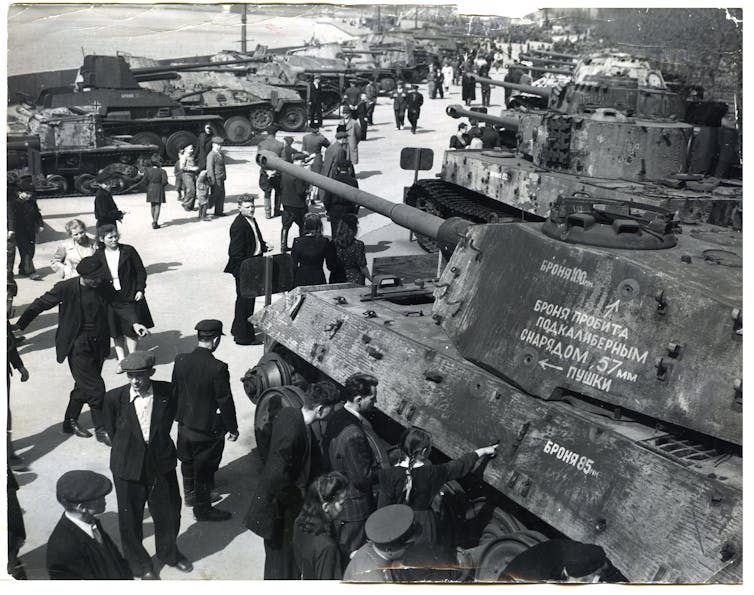
The biggest Soviet exhibition of captured German weapons opened in Moscow’s Gorky Park on June 22, 1943, the second anniversary of Germany’s invasion of Russia. The grandiose outdoor display featured German tanks, planes, cannons and other large equipment.
The exhibition conveyed two messages. First, the enemy was powerful, as evidenced by its innovative and strong equipment, and victory would require everyone’s full effort. Second, though, the fact the weapons were captured demonstrated that the Red Army and the Soviet people were able to overcome and defeat the invaders.
Similar exhibitions opened in many other Soviet cities, including Leningrad, Minsk and Kyiv. The displays were dismantled by the end of the 1940s; the weapons were recycled as scrap.
Mocking the enemy
Since Russia first invaded the Donbas region of eastern Ukraine in 2014, Ukrainians have embraced the practice of displaying captured weapons as trophies.
In July 2014, the National Museum of the History of Ukraine in the Second World War in Kyiv presented a temporary exhibition of heavy equipment captured from Russia-sponsored separatist groups. After the full-scale Russian invasion of Ukraine in 2022, Ukraine continued to use the trophy exhibitions of newly captured Russian weaponry as propaganda, seeking both domestic and international support.
In May 2022, the National Military History Museum of Ukraine opened an exhibition of recently destroyed Russian military equipment on Mykhailivs’ka Square in the Kyiv city center. The exhibition of the wreckage was meant to boost the morale of the Ukrainian people by celebrating the strength of the Ukrainian army, and to humiliate the enemy by demonstrating the incompetence and moral inferiority of the Russian army and its weaponry.
A month later, Ukrainian President Volodymyr Zelenskyy took then-British Prime Minister Boris Johnson to visit the exhibition, along with other sights of Kyiv.
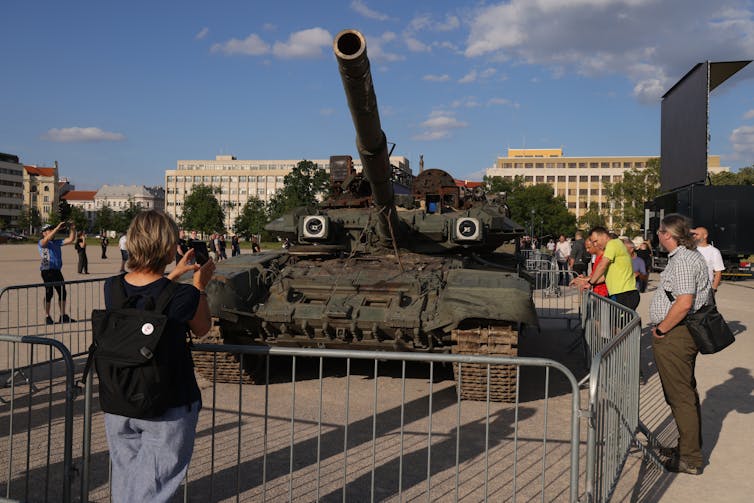
Gathering international support
Ukraine has used captured weapons to seek support from other former Soviet-bloc countries, sending Russian trophy weapons for display in Poland and the Czech Republic.
In Prague, Ukrainian Minister of Internal Affairs Denys Monastyrsky opened the exhibition of the defeated Russian tanks and other weapons on July 11, 2022. In his speech, Monastyrsky referred to the August 1968 Soviet invasion that crushed the anti-communist Prague Spring demonstrations, saying, “Russian tanks are back in Prague, but this time broken, burned out by the hands of the Ukrainian warriors.”
With this ancient practice, Ukraine is showing off its might and resolve, and demonstrating its opponents’ weaknesses – boosting morale within Ukraine and bolstering support from the international community.
Anya Free does not work for, consult, own shares in or receive funding from any company or organisation that would benefit from this article, and has disclosed no relevant affiliations beyond their academic appointment.
Read These Next
How to reduce gift-giving stress with your kids – a child psychologist’s tips for making magic and a
Depending on family circumstances and a child’s personality type, gift giving runs the gamut of fun…
The world risks forgetting one of humanity’s greatest triumphs as polio nears global eradication − 7
Polio may finally be defeated in the next 5 years. Will the world recognize what an extraordinary achievement…
People are getting their news from AI – and it’s altering their views
Even when information is factually accurate, how it’s presented can introduce subtle biases. As large…






